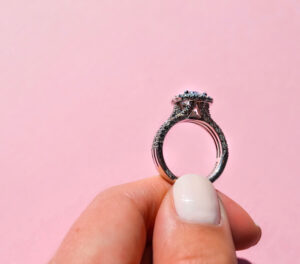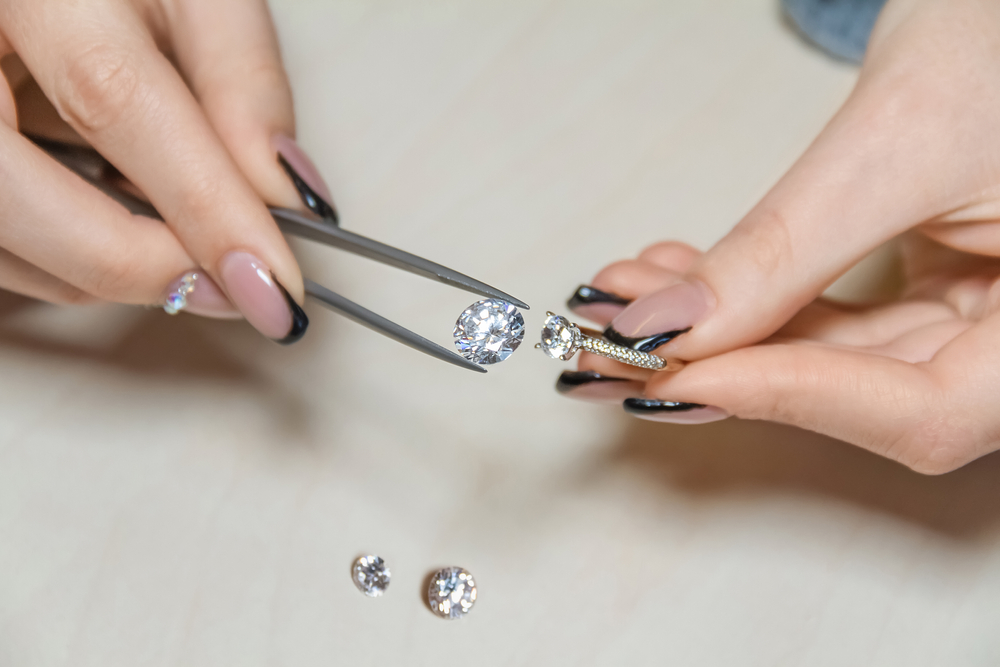
Purchasing a diamond ring, whether natural or lab-grown, is an emotional process for most people, and it is something we truly commit and devote to that one particular person. It’s only natural to want to know if it’s real before dedicating yourself to a diamond. That being said, you’re definitely curious as to how to know if the diamond you have chosen is genuine or not.
Let’s take a look at some easy tests that you can do at home to check whether your lab-grown diamond or natural diamond is fake or not.
Water Test
This is one of the simplest ways to tell if your diamond is fake or real, although it isn’t always accurate. Toss your gemstone into a glass of water. Since the diamond has a higher density, it will fall to the bottom, which means the stone is real. If the stone is fake, it will float on the water’s surface. One problem is that some fake diamonds can fall to the bottom. Therefore, you may need to use another method.
Fog Test
Hold the diamond in front of your mouth and blow into it to see whether it’s genuine. The diamond you have is real if it clears up after one or two seconds. If it stays cloudy for more than three seconds, it is a fake. Diamonds distribute heat instantly, preventing fogging. Check if your diamond is clean and free of oils before attempting this test.
Use A Magnifying Glass

Hold your diamond up to the light with a magnifying lens to check for flaws. If you can’t locate any, it’s probably a fake; most true diamonds include inclusions, which are defects. While perfect diamonds do exist, they are either extremely expensive or lab-created. However, don’t toss the stone away after this since you could be holding a pristine, highly precious diamond.
Check The Mount
Verify the kind of mount that is used in the ring. Only high-quality jewelry, such as white gold, platinum, pave, yellow gold, or halo settings, and side-stone setting rings, should be used to set it. Examine the inside of the ring for indications to see if the setting is exactly as described. Platinum is denoted by the letters PT, while notes with 10K, 14K, and 18K identify the type of gold used. When you see figures like 585, 770, 900, and 950, it means platinum or gold was utilized. The gemstone utilized in a “C.Z” marking, on the other hand, is cubic zirconia, not a true diamond.
